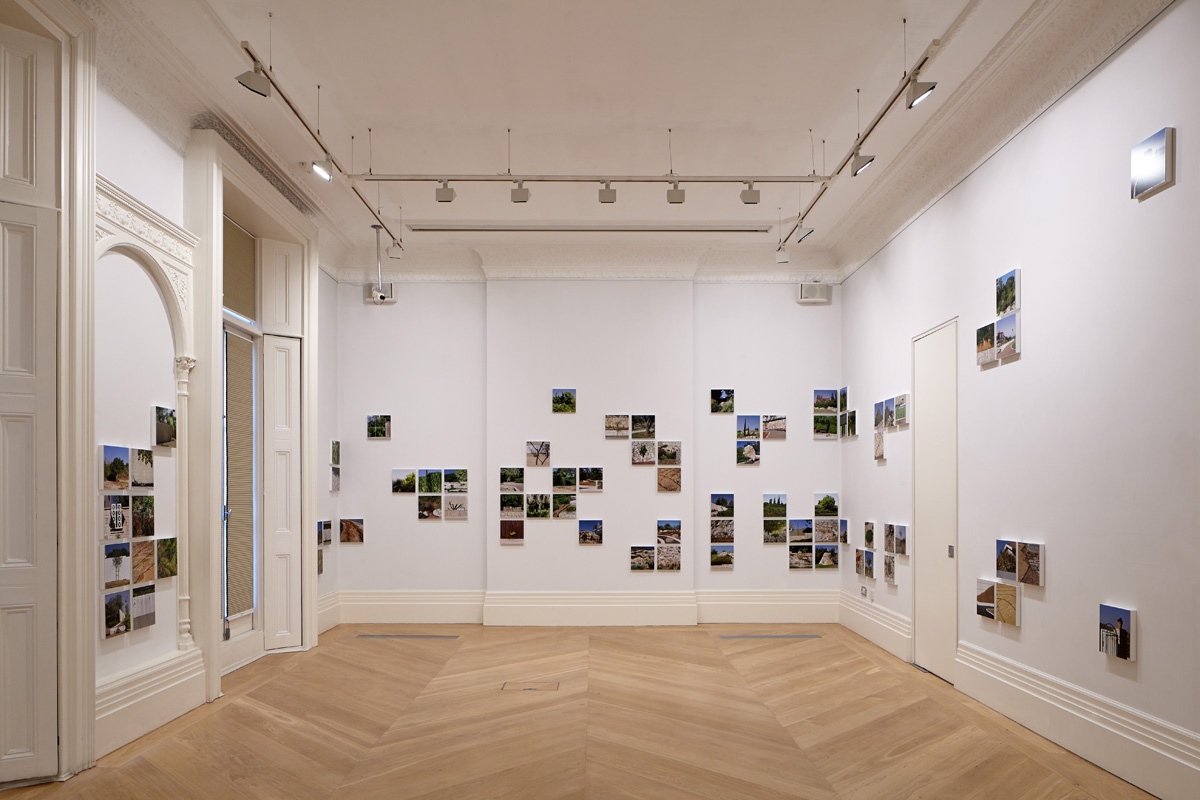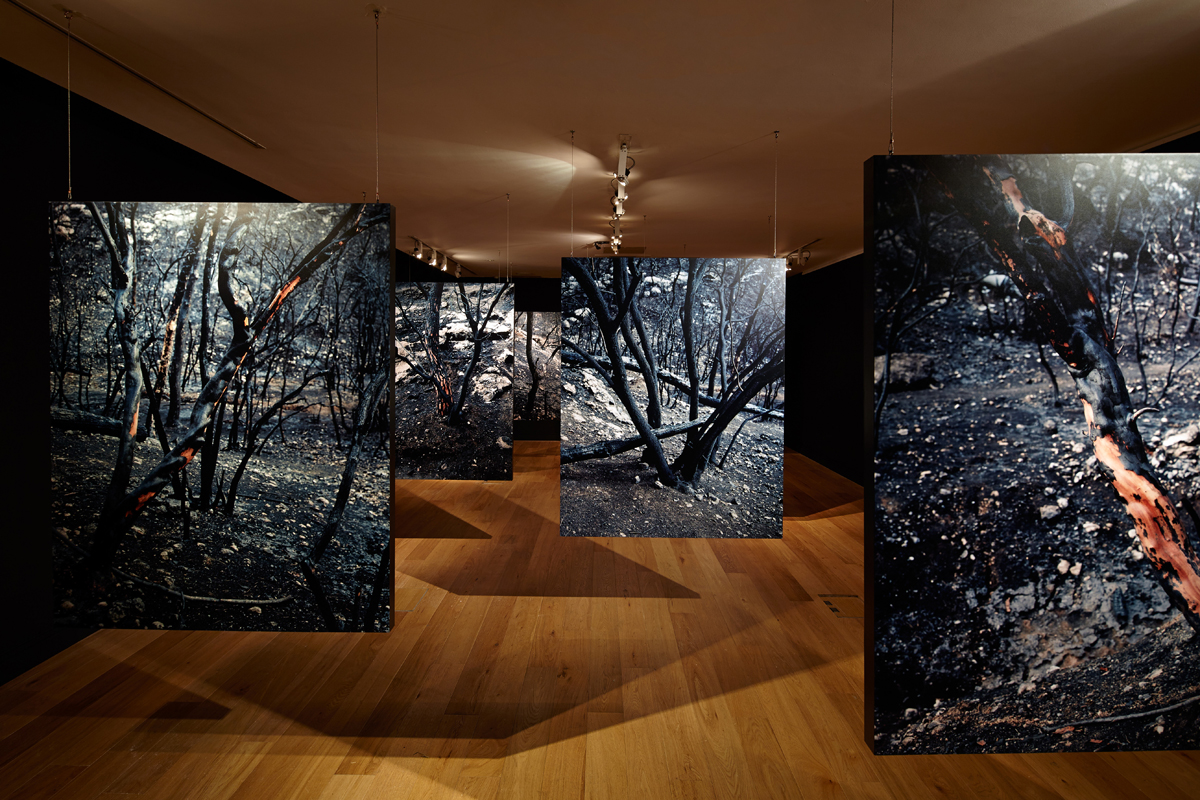Q&A with artist Corinne Silva
Q1/ You are currently exhibiting your solo show Garden State at The Mosaic Rooms, can you tell us briefly about what inspired it and what it includes?
The show consists of two photographic room installations of works made in Israel/Palestine; Wounded is made up of nine photographs suspended from the ceiling with a sound installation, and Gardening the Suburbs is a photographic wall installation of 110 pictures, which wraps the whole of the main gallery.
Through both works, I look at the politics of gardening and cultivation. I was interested in exploring ways in which a civilian occupation is made manifest through the shaping of the landscape, through suburban gardening, and the planting of forests and designation of National Parks.
For Gardening the Suburbs I made photographs of public and private gardens in twenty-two different Israeli settlements. The wall installation loosely maps the way the settlements move inland from the coastal areas, around the Green Line and into the West Bank. The pictures are clustered according to geographical location.
I am interested in what gardens mean, what they might represent. Gardens help to ‘normalise’ these settlements. They also mean that people intend to stay; they are literally putting down roots. So gardens are a useful tool for the State to take land and hold onto it. What’s more, in the imagination, a house and garden is rarely seen as a violent weapon of occupation.
Q2/ What do you hope viewers will take away from the work in the show?
I don’t allow the viewer to get a wider sense of each place in the photographs. I encourage the viewer to imagine what lies beyond, behind, around. I also offer some cracks and fissures and breaks; pictures where rocks don’t properly join with brickwork, for example. The façade of the Israeli State is not seamless, and I want to think about the potential for future change in this place. If these places were built, and are allowed to continue to exist, it is because the Israeli State narrative is a powerful one that has taken hold of people’s imaginations. Places, landscapes, exist in the imagination before they exist materially. If the imagination is employed so powerfully to construct these places, how might it be used to deconstruct them.
The Wounded work also connects to my interest in cycles of occupation, colonisation and decolonisation. Two weeks before I arrived in Israel/Palestine in 2010, a forest fire in the Carmel Forest in the north, above Haifa, had destroyed acres of forest and taken the lives of a dozen people. For the installation, the large-scale photographs of the burnt trees are suspended from the ceiling throughout the room, hung at human height: you encounter them in a very physical way. The sound throughout the space is from a recording I made when I returned to the forest three years after the fire. I discovered that the trees planted by the State, largely oak and pine, had not been replaced. Instead the flora that was there before the planted forest had been allowed to grow. This foliage was now waist high, and I made a sound recording of me walking, stumbling, dragging myself through this new/old plant life.
Q3/ What are you working on right now? Do you have any further exhibitions planned?
I am showing Imported Landscapes in a group show at the Musée de l’Elysée, Lausanne, which opens at the end of May and I have just got back from a month-long residency with AADK in Murcia, Spain. I made a number of walks in the landscape, and I’ll be developing work from that over the coming months, again looking at the politics of cultivation as well as walking practices.
Rocks and Fortresses is my other work in Spain, which I’ll be continuing in Egypt later this year. I am making photographs of rocks and fortresses along the Mediterranean coastlines. In each location, I gather earth or rock from the place I make the photograph and use this to make pigments. This I use to paint out the skies of the black and white photographs I make. The sky becomes the earth, and the photographs alongside one another reveal the reds, oranges and yellows of these connected landscapes. By painting out the skies I’m referencing early photographic processes, such as paper negatives, where the skies would be painted with black gouache. This is a way for me to think about the role landscape photography has had – since its inception – in empire building. And of course, the Mediterranean has been the site of empire after empire, since the time of the Phoenecians. Fortresses for me represent separation, be that an individual’s desire to lock oneself away in a gated community, or military or nation state boundary making. Geological formations are the element that binds these landscapes; they are the connecting points.
Finally, later this year The Mosaic Rooms and Ffotogallery are publishing my forthcoming book, Garden State, with contributions by Eyal Weizman and Val Williams.
Garden State will be on show at The Mosaic Rooms until 20 June 2015. Entry free. Plan your visit here.

